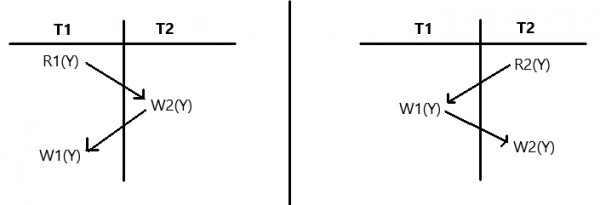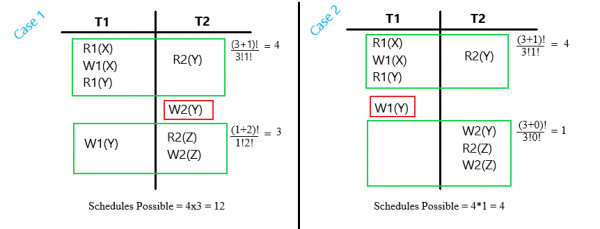If there are n transactions and each having operations a1,a2,a3,.....an. then
Total number of schedules possible = $\frac{(a_{1}+a_{2}+a_{3}+...+a_{n})!}{a_{1}!a_{2}!a_{3}!...a_{n}!}$
Therefore, for this question, total schedules possible = $\frac{(4+4)!}{4!4!}=70$
Lets find Schedules which can form cycle in the precedence graph i.e the schedules which are non-serializable.
For operations to be conflicting atleast one of them should be write operation.
Conflicting operations form cycle in two ways for given transactions.

Now, we can apply above formula to find the schedules possible for above two cases as shown below ( We fix W2(Y) in first case and W1(Y) in second case).

Total non-serializable schedules possible = 12 + 4 = 16.
Therefore, serializable schedules possible = 70 - 16 = 54.
Answer: 54